Great day on the Dee Estuary
We headed east today for a great day birdwatching around the Dee Estuary.
At West Kirby beach we watched the tide flood across the sands in front of Hilbre Island. The big sky was full of birds as waders, gulls and terns were rolled ahead of the rising waters.
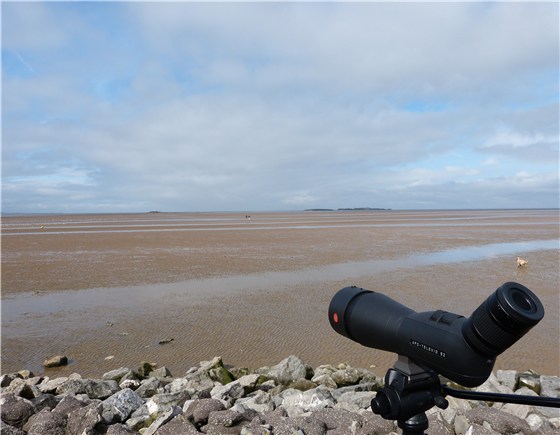
The view across to Hilbre Island
Two Arctic Skuas powered up the estuary, like dark fighter planes, intercepting hapless gulls and turns. The skuas were relentless in their pursuit, twisting and turning until their victims disgorged their last meal. Breathtaking stuff!
We picked out four Mediterranean Gulls amongst the hordes of Black-headed and Common Gulls moving ever closer as the tide rose. Flocks of Dunlin, Sanderling, Ringed Plover and Bar-tailed Godwit swirled over the sands. Huge numbers of Oystercatchers gathered on the rocks off Hilbre Island and were joined by two Pale-bellied Brent Geese, newly back from Canada.
Suddenly the air was full of wings and alarm calls. We looked as a female Peregrine swept in, intent on a meal! Another breathtaking hunt but this time the hunter left without a meal.
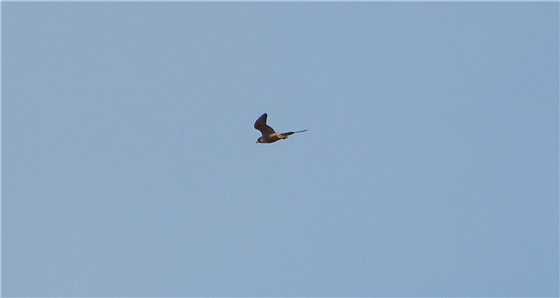
Peregrine powering over the beach
Further down the estuary we scanned the vast marshes off Parkgate and were soon watching a ring tail Hen Harrier floating over the sea of waving grass. Two Marsh Harriers and four Kestrels hunted here.
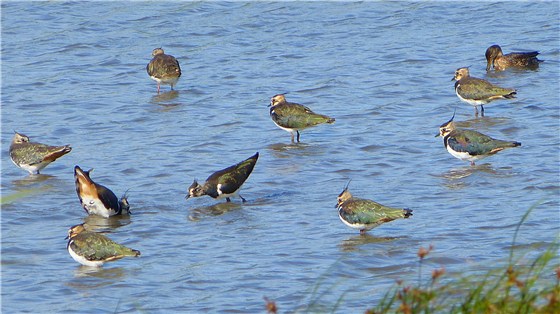
Irridescent Lapwing in the sunshine
Down at RSPB Burton Mere Wetlands reserve more waders were the highlight with five Ruff feeding amongst hundreds of Black-tailed Godwits. Eight Spotted Redshanks were picked out and many Common Snipe were on the pool. A Sparrowhawk flashed past and two more Marsh Harriers floated over the reeds giving wonderful views. One of the harriers had green wing tags, a juvenile bird marked in Norfolk earlier this year!
On the other side of the reserve, at the Inner Marsh Farm hide, we picked out a juvenile Garganey amongst hundreds of Teal. The light was wonderful and the views of the waders and wildfowl were stunning.
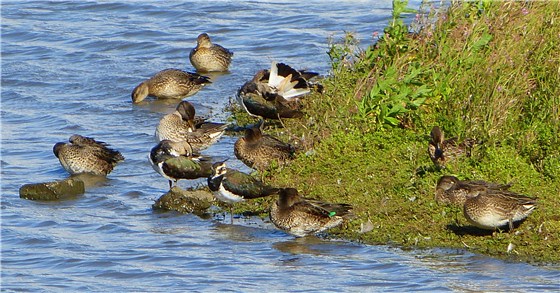
Lapwing and Teal at RSPB Burton Mere Wetlands
We called back at the reception hide and were rewarded with great views of the juvenile Pectoral Sandpiper which had been hiding on our first visit. This rare wader was feeding around the muddy islands dwarfed by the Black-tailed Godwits.
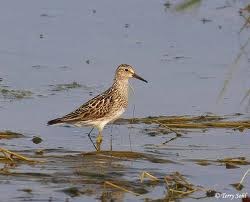
Pectoral Sandpiper
A brilliant end to a great day birdwatching around the wild and magnificent estuary.
Our next trip to the Dee Estuary is on 14th September, so do come and join us for more wonderful birds, or book a custom tour on a date that suits you! Email us on
info@thebiggesttwitch.com for more information or to book your place. We look forward to hearing from you!